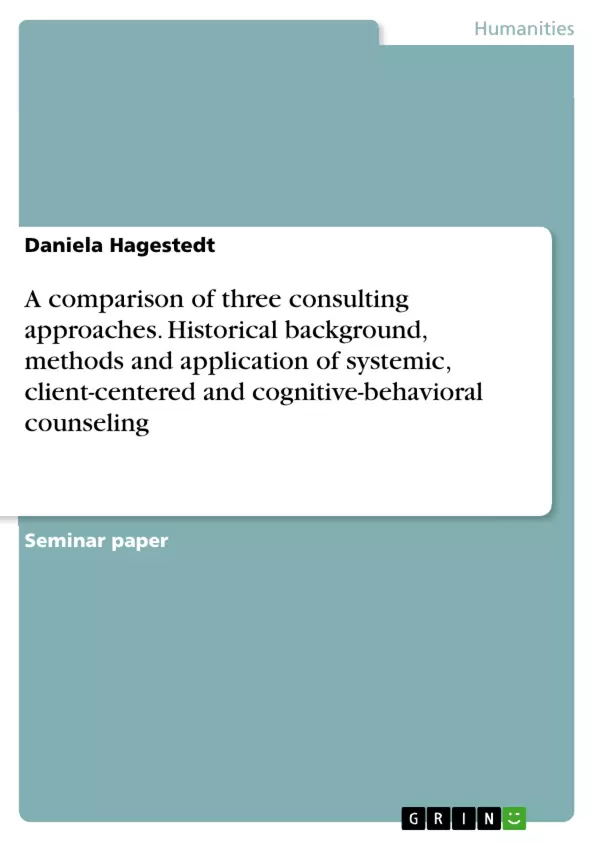There is a multitude of psychological theories and approaches, from which various forms of counseling and therapy have developed over time, some of which are used more, some less in practice. All of these approaches have a common starting point: they want to help people alleviate or remedy existing problems. However, this is attempted in a wide variety of ways in both therapy and counseling. This paper considers three of these approaches in the field of counseling: systemic counseling, client-centered counseling, and behavioral or cognitive-behavioral counseling. It will be shown to what extent these approaches are similar and in which points they differ. In the first section, the most important historical developments of the three approaches will be briefly described, followed by a more detailed description and comparison of the theories underlying the concepts. Subsequently, it will be shown that the different theoretical foundations of the three approaches are also reflected in their application and their specific methods. In a final conclusion, the most important differences of the counseling approaches will be briefly presented again, and important areas of application in the educational field will be outlined.
Inhaltsverzeichnis (Table of Contents)
- Introduction
- Historical development
- Client-centered consulting
- Behavioral counseling
- Systemic consulting
- Theory and image of man
- Methods and application
Zielsetzung und Themenschwerpunkte (Objectives and Key Themes)
This work aims to compare and contrast three prominent approaches in consulting: systemic counseling, client-centered counseling, and behavioral counseling. The focus is on highlighting similarities and differences in their theoretical foundations, application methods, and historical developments.
- Historical evolution of each approach
- Underlying theories and their impact on practice
- Specific methods employed in each approach
- Areas of application in the pedagogical field
- Comparison of similarities and differences between the three approaches
Zusammenfassung der Kapitel (Chapter Summaries)
- Introduction: The chapter introduces the three consulting approaches, their common objective of helping people address problems, and the structure of the work.
- Historical development: This chapter provides a brief overview of the historical development of each approach. It discusses the origins of client-centered counseling in Rogers' work, the evolution of behavioral counseling from animal research to cognitive therapy, and the emergence of systemic counseling from general systems theory and family therapy.
Schlüsselwörter (Keywords)
The key concepts and focus topics of this work include systemic counseling, client-centered counseling, behavioral counseling, historical development, theoretical foundations, application methods, and pedagogical field.
- Arbeit zitieren
- Daniela Hagestedt (Autor:in), 2007, A comparison of three consulting approaches. Historical background, methods and application of systemic, client-centered and cognitive-behavioral counseling, München, GRIN Verlag, https://www.grin.com/document/1222614



